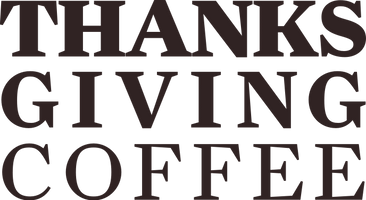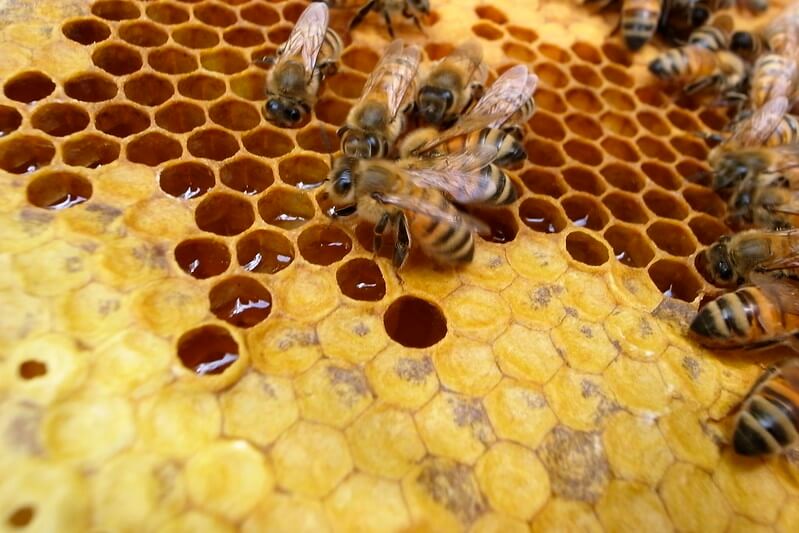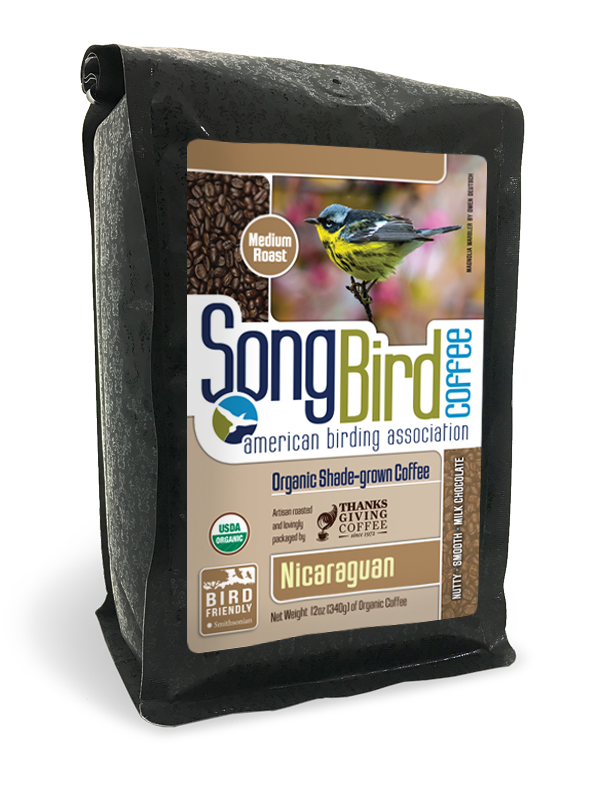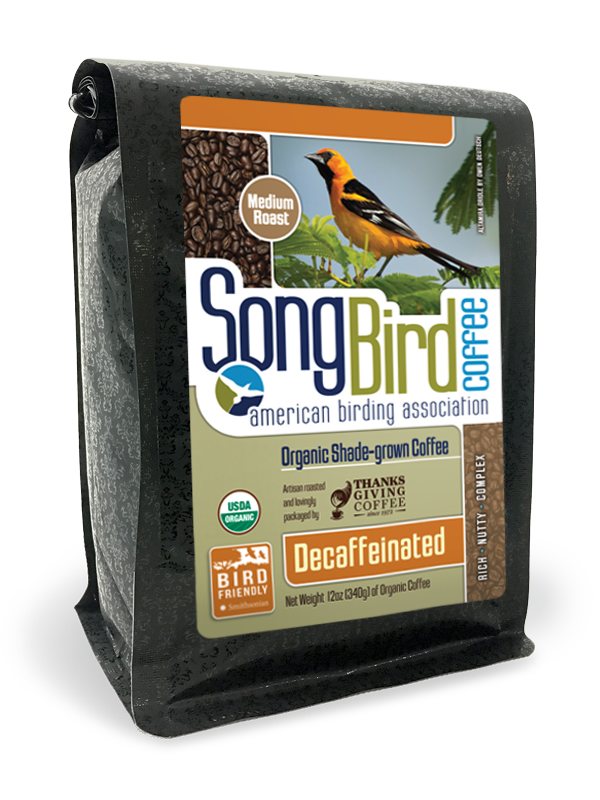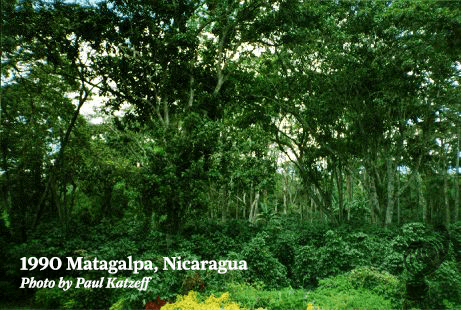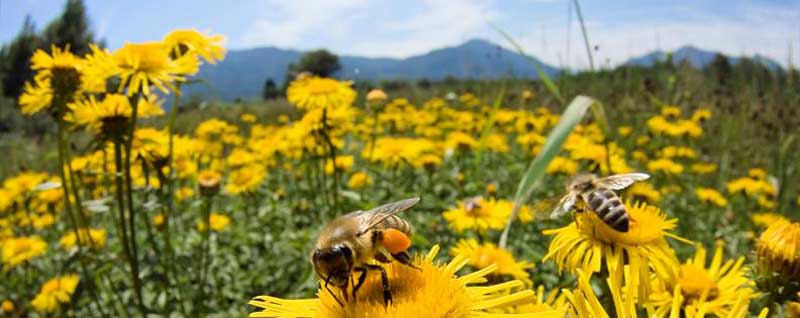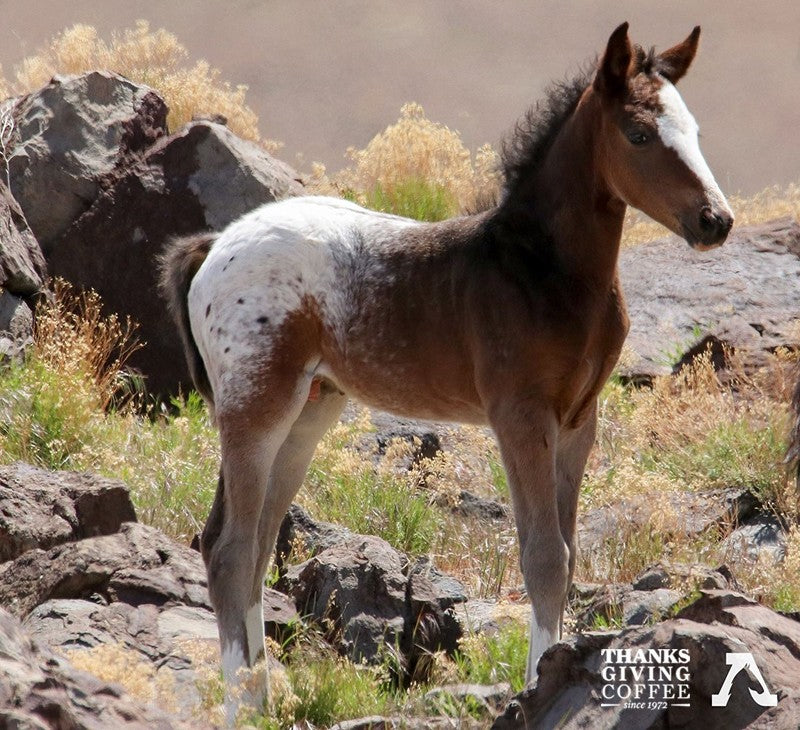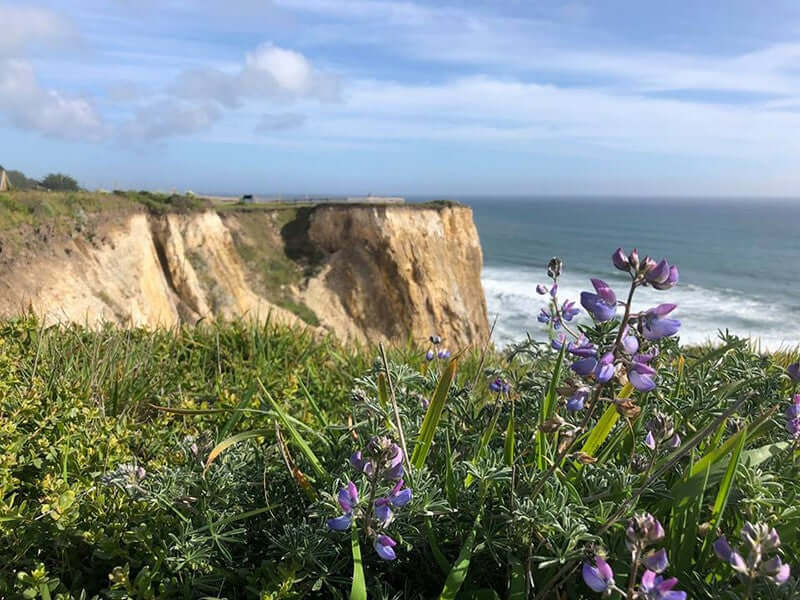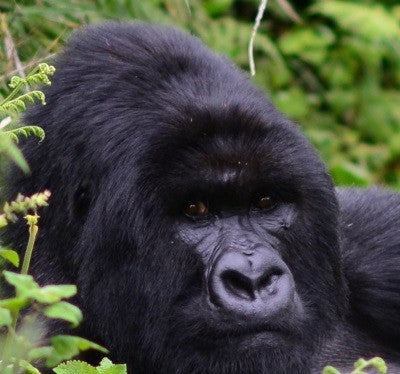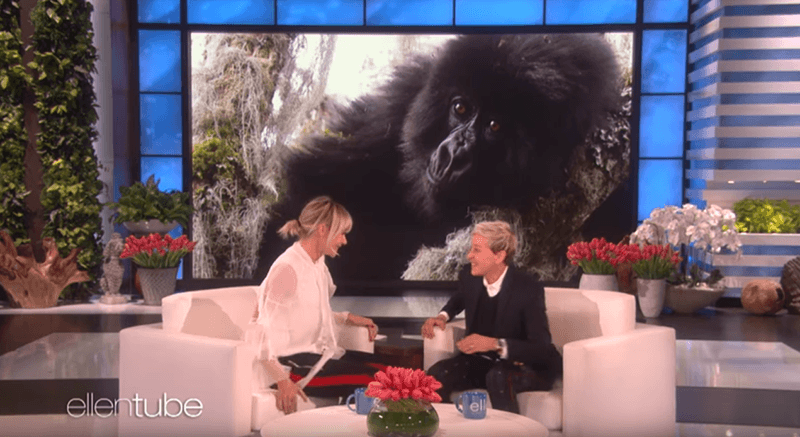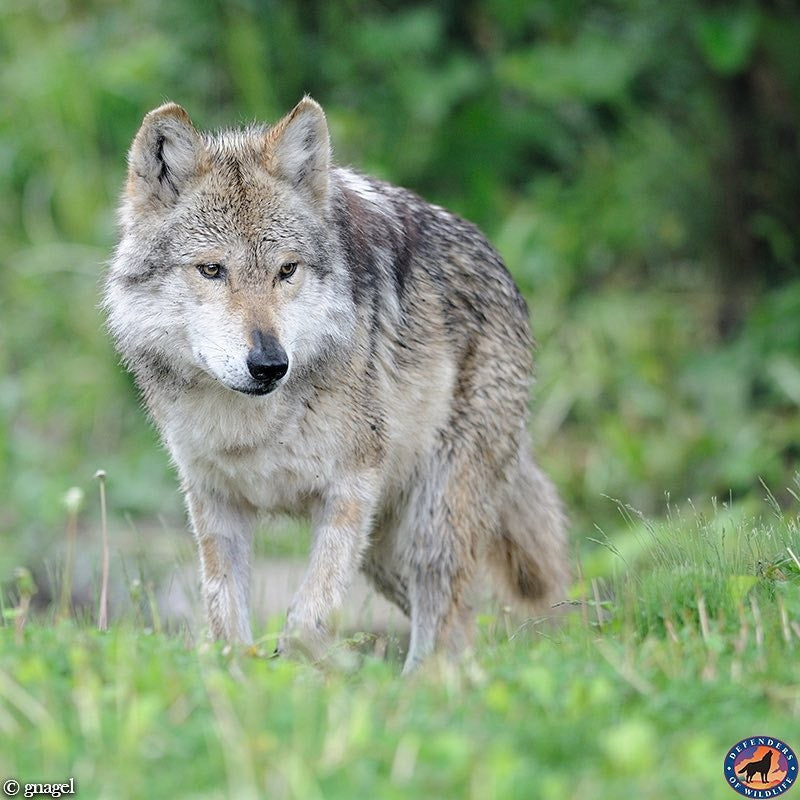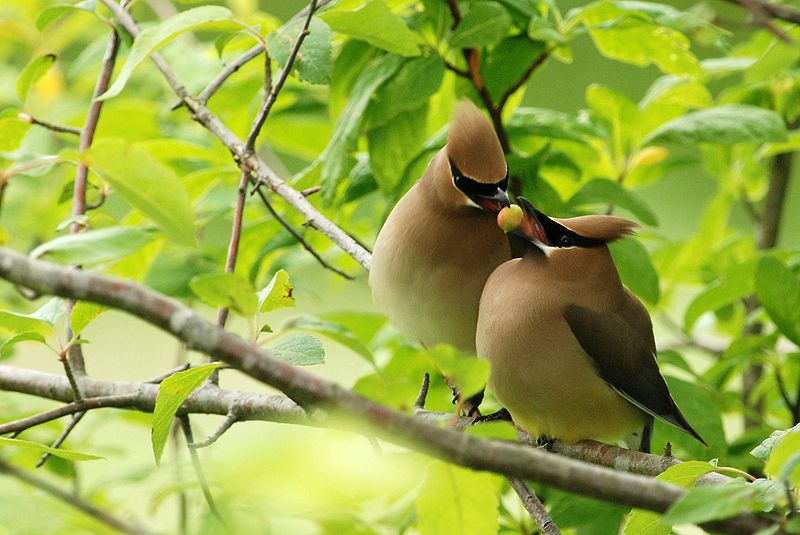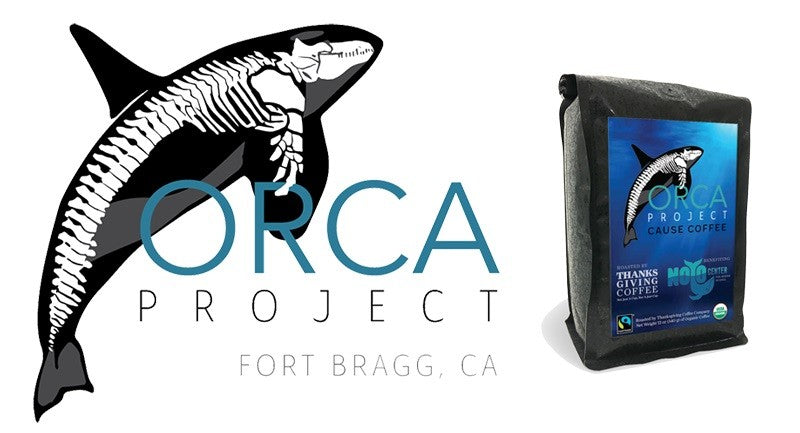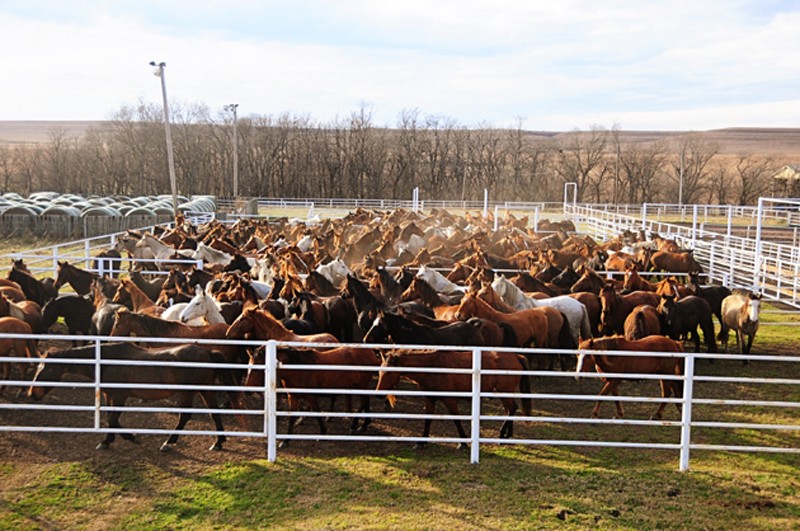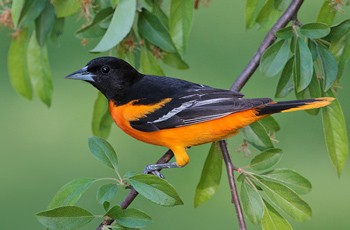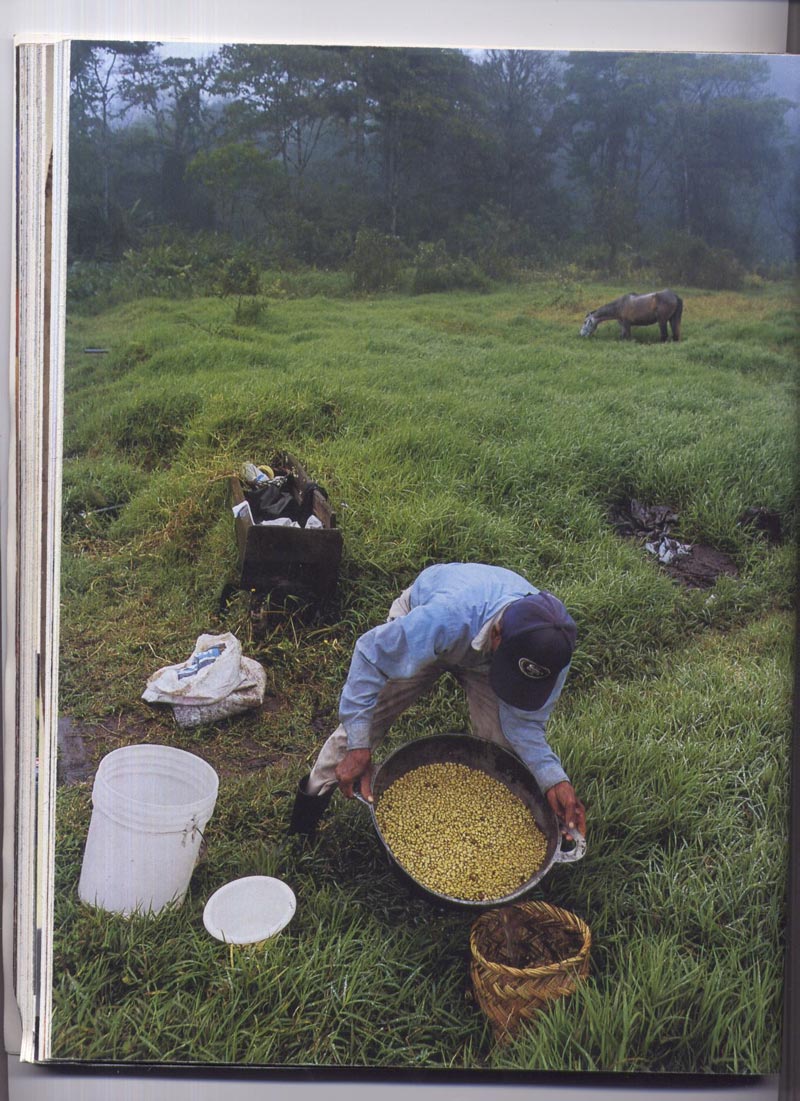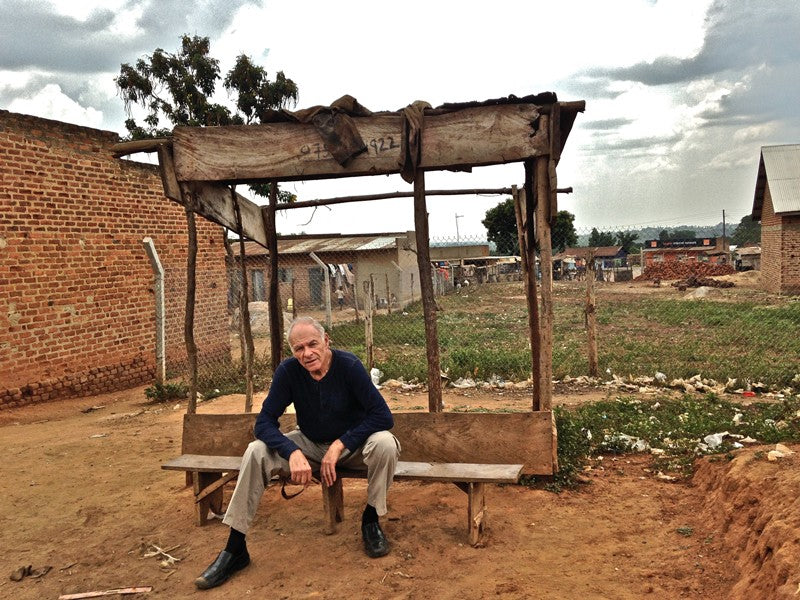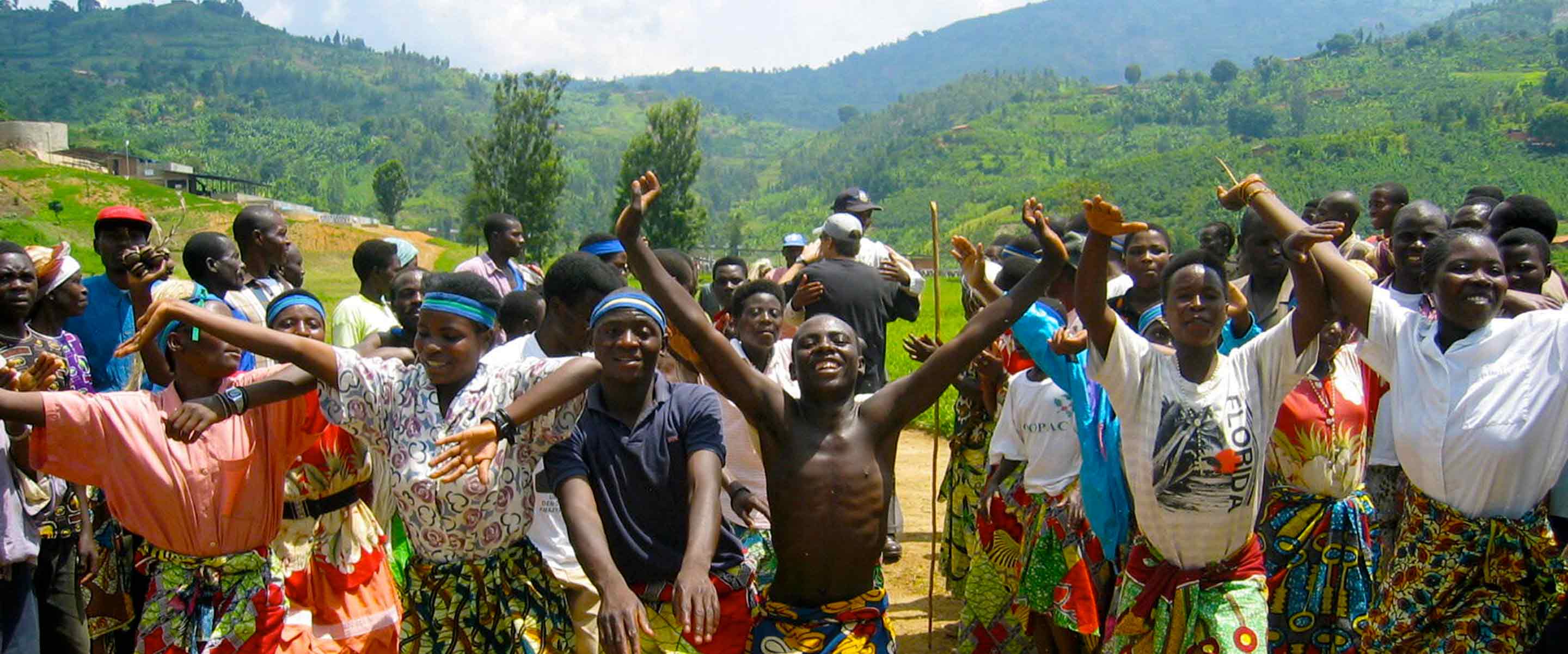
News, Stories and more
Our Blog
View BY :
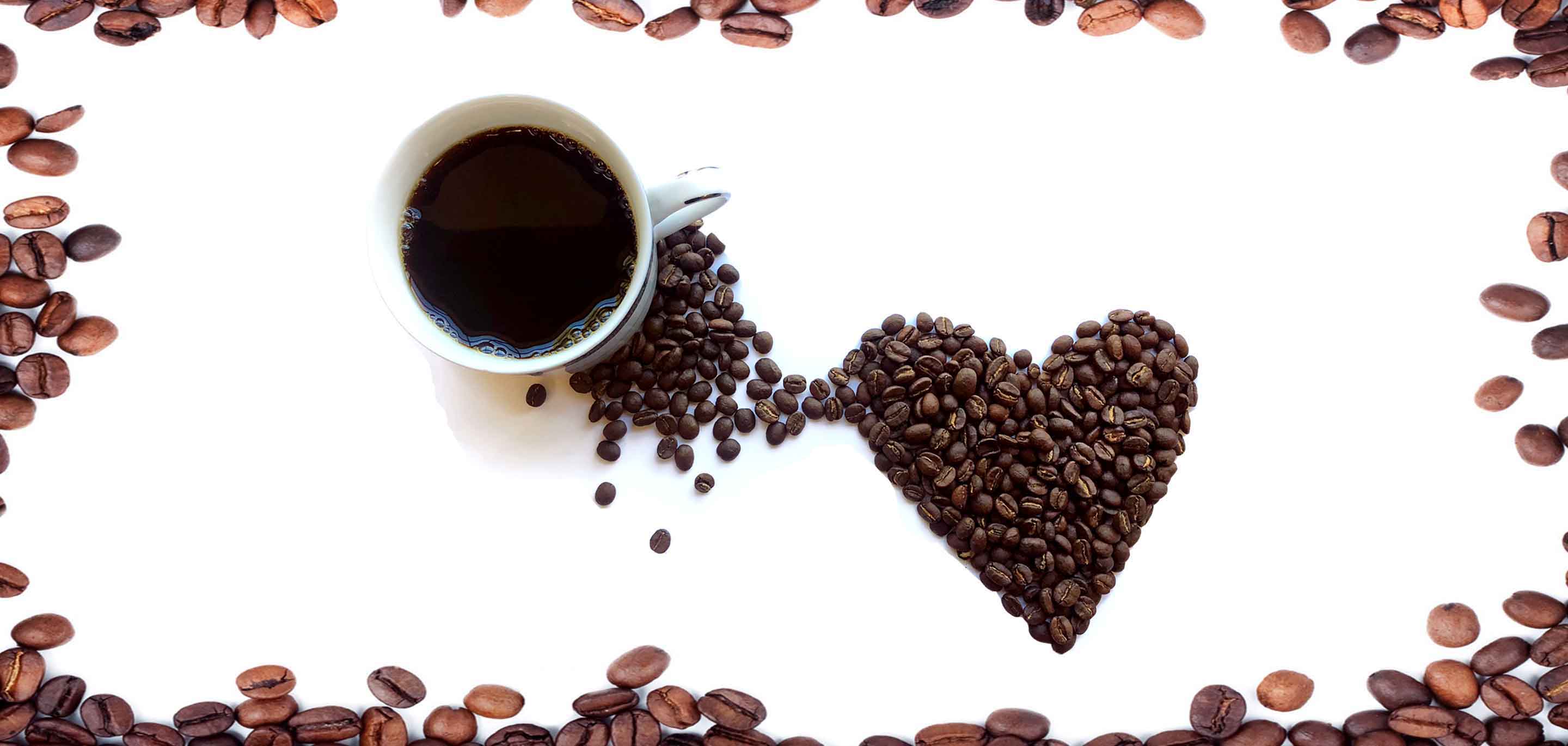
Earning Beans For Coffee Rewards
Thanksgiving Coffee Company Appreciates You We have made it simple and effective for you to get the appreciation we think you deserve. It is the “Earn Beans” reward system. Yay! These rewards will be counted as “beans” which you can redeem as discounts. The more beans you earn the greater the discount, all the way up to free products!
read more-
![Introducing the Bee Bold Alliance]()
Bee Bold Alliance
A Regenerative Network for Pollinator Protection
Right now, bees are dying worldwide at an alarming rate. Why should you care? Because bees and other pollinators are an essential link in the food chain—our food chain.
The Bee Bold Alliance is a movement to help people attract and sustain pollinators in their home gardens, and at their place of work through habitat restoration and creation.
The Bee Bold Alliance blog will share stories that follow both the root causes for the disappearance of the bees and why it is so important to listen to the pollinators. Join us as we explore the diversity and abundance of our Pollinators of the world.
The Four Areas of Focus:
Culture: How Beauty, Art, and Intention Influence our Ecology
Provisions: The Power of Food & Herbal Medicine for Global Health
Regulation: Regenerative Systems for Ecological Solutions
Support: Soil and Water Health, and Traditional Place-based Knowledge of Native People
In these stories we tell how to collaborate with our Bee Bold Partners for the greater good of all. We will look into how we learn from our mistakes and utilize all of the tools available to us to solve the problem of our disappearing pollinators and the huge impact this has on our ecology.
As a Certified B Corp Thanksgiving Coffee Company is prepared to lead the way for Pollinator Protection in our community and beyond.
The Main Objective
The Bee Bold Alliance is about helping people learn how to attract and sustain pollinators in their home gardens & at their place of work through habitat restoration and creation.
However we will not stop there, we are going to look deeper into the root cause of the disappearance of pollinators and discover modern solutions, that perhaps have previously been overlooked.
To find examples of a sustainable relationship with the earth, we will look to a regenerative ecology network that includes Traditional Ecology Knowledge (TEK). Incorporating the Indigenous place based wisdom gathered from around the world by those who develop and maintain a deep and ancestral connection to the land.
Each One Of Us Carries A Piece Within, It Is Up To Us To Find It, And Use It For The Greater Good.
You too, are part of this solution, and I thank you for being here. Your support on this collaborative project is essential. Your participation will allow us to move forward for a bountiful future for all. If you are coffee drinker, make your coffee our Bee Bold Coffee and support pollinator protection in your local region every morning.
The Beginning
The Bee Bold Alliance came into focus in 2018, just after receiving a loud and clear message that it was “my time” be a steward of this land. Shortly after I received this message, Thanksgiving Coffee Company invited me to relaunch the Bee Bold project.
In revitalizing this campaign, what was once Bee Bold Mendocimo became the Bee Bold Alliance for Pollinator Protectors. The more I learned about my role in leading this campaign, the less I truly know. For example, now I understand it is not about being a “steward”, one who watches over the land, but more importantly one who actively gives to the land before one takes. To be full of gratitude for all we are given. To move through each day with honor and respect for the Earth that gives us every little thing that we need.
The Bee Bold Alliance is a reminder that you can give to the land you live on, to the land you do your business is on, and to the community you are part of. The vision is to build native food forest with Native People, with the seed savers, and to support the health of our new generations. The Bee Bold Alliance is about honoring the original care givers of these lands, and protecting the pollinators who allow us to grow the seeds of real food to nourish our bodies and our hearts.
As we develop this full spectrum ecology system for pollinator protection, we must include the practices of cultural ecology.
- Learn from the wisdom of our elders who remember and hold these stories of how we can adapt to our changing world.
- Revitalise the rich lineage of community song & dance as an important piece of the creation processes in our food system
- Remember and recreate connection to the spirit of life through our culture,
- How is sound health for our ecology manifested?
The Earth is full of abundance, the gifts of life are all around us, and all that we need to survive comes from this great planet Earth. How do we learn to live in harmony with the Earth and all its inhabitants? This is what I want to know, and I will take you through this journey of learning, as we travel many roads and look at many different tools that can be utilized in this work of rebalance, harmony, well being and sound health.
Here we are at the beginning of an emerging network for mutual support of our pollinator protectors: it will grow as we build it. Our World is as resilient as we make it. Let us find this new form of global coherence with the aid of one another. I hope you will join us on this journey. Become a pollinator protector with the growing Bee Bold Alliance here.
Follow the Evolution of the Bee Bold Alliance
2015: The 1st Bee Bold Advisory Committee
2016: Our 1st Bee Bold Event
2016: Fort Bragg becomes 1st Bee City USA in CA
2020: Introducing the Bee Bold Alliance
2020: The Way of the Bee Bold Alliance
2021: 4th World Bee Day
2021: Live Feed- World Bee Day
2022: Expanding Our Story of a Growning Alliance
2023: Native Cinema 2023- Groundworks
Lavender Grace is the Sustainable Consultant for Thanksgiving Coffee Company
I want to thank the many wonderful advisors who have informed this work
Introducing the Bee Bold Alliance
read more -
![Ancient History of Pollination]()
Ancient History of Pollination
“Go to your fields and your gardens, and you shall learn that it is the pleasure of the bee to gather honey of the flower, But it is also the pleasure of the flower to yield its honey to the bee. For to the bee a flower is a fountain of life, And to the flower a bee is a messenger of love, And to both, bee and flower, the giving and the receiving of pleasure is a need and an ecstasy.” Kahlil Gibran

There has been a lot of talk about pollinators in recent years, and how the declining populations of honeybees will affect food production. But have you ever wondered how it all started? When I began to write this, I had a rather broad understanding of pollination. However, the more I learned, the more questions I had. How did pollination come into being? Why is it so important to us now? Let’s take a deep dive into ancient history to learn a little more about the origins of pollination.

Pollination is believed to have begun around 130-150 million years ago. Basically, pollination is plant sex: the way plants spread and combine their genetic material to create new generations of plants. It is also essential to the production of fruit and seed crops that form the basis of our current food system. In the earliest forms of pollination, plants would scatter their pollen (male seed) to the wind and hope that a portion would land in the right spot on a female flower (stamen) and voila, there would be “chemistry”! However, this is an extremely unreliable way to reproduce. Although many plants still use this method, most have evolved into a primary relationship to collaborate with insects.

As early insects were flying around in search of food, they discovered how nutritious pollen was. Then several specialists decided to make pollen their main source and feed solely upon this nourishing golden dust of microspores. As the plants grew and thrived as a result of these relationships, they began to “sweeten the deal” by creating nectar for the services rendered. Flowers began to evolve bright colors to stand out and attract insects, distinguishing themselves from the green leaves and foliage that offered no sweet reward for the hard-working pollinators.
Millions of years have passed since the first flowers developed their pollination practice into the stunning displays we see today. This mutualistic relationship has changed the entire appearance of the earth, into the bright and colorful flowers and the vast variety of fruits and vegetables we all enjoy.

Learning the evolution of pollination from its ancient origins to the intricate and collaborative relationship that now occurs has been an inspiration to me. I hope the next time you receive a bouquet of flowers or taste the sweet juices of your favorite fruit, you think of the 130 million year journey it took to reach you.
Follow the Bee Bold Alliance Evolution
A regenerative campaign from Thanksgiving Coffee to protect pollinators
Ancient History of Pollination
read more -
![The Magical and Miraculous Creation of Honey]()
How is it Done? The Magic of Honey

There is special magic found in the miraculous process of honey.
The dedication and unique skills called upon in these extraordinary pollinators is a true wonder. This golden “ambrosia” of vitality and health is the result of a tireless collaboration of specialists capable of exceptional chemistry.
What is the Mysterious process of Honey Making?
How do these honeybees produce this amazing life-sustaining liquid gold?

First, we must enter into the very heart of the flowers. As we learned in the Ancient History of Pollination, this is where the nectaries are created. The flowers offer up their sugary liquid to the bees with added mutual benefit for both.
Mutualism is believed to be one of the most common ecological interactions in communities throughout the world. The forager bee drinks and fills their special honey stomach full of nectar and then makes a beeline home.

Upon arrival to the hive, the nectar is transferred from one bee’s stomach to another in a process of regurgitation. With each transfer, a special bee enzyme (invertase) is added from each bee via the honey stomach. This is done repeatedly until the optimal viscosity is reached. Then the golden liquid is poured into a hexagon cell to be fanned on my rapidly beating wings. With 80% of the water content evaporated out, the hexagon is sealed with wax and set to cure into honey. This is now a supersaturated solution that contains over 180 components.

This “super” solution provides food and energy for the foraging flights of the bees. To produce one pound of honey, it take over 2 million flower visits, or roughly 55,000 miles flown. Nectar is gathered from a diverse array of sources to help maintain healthy immune systems. The magic of honey is in the diversity of its unique creation. Within the extremely vast healing properties of honey, to the essential role pollinators play in the sphere of our food systems, let honey be a sweet liquid reminder of the full beauty of life itself.


Lavender Grace is the Sustainable Ecology Advocate for Thanksgiving Coffee Company and Consultant for the Honey Hive of Mendocino
The Magical and Miraculous Creation of Honey
read more -
![Springtime for SongBirds]()
The best coffee is grown the traditional way— slowly, under a canopy of shade from taller native hardwood trees. Shade-grown coffees are carefully tended, harvested, and processed by people who know and love coffee, and who depend on it for their livelihoods.
Traditional shade-grown coffee really is a win for everyone: amazing coffee flavors, a fair wage for the coffee farmers’ hard work, and a lush natural habitat for migratory birds. So much good comes from a just cup of coffee.
The History of Shade Grown
By 1996, the United States forests had run out of hardwoods such as oak, ash, maple, cherry, and all the wild fruit and nut trees. These are important woods used in furniture making, home building, veneers for plywood, doors, window frames and a host of other minor but important uses.
The timber industry needed another source of hardwood, so they targeted the temperate rainforests where coffee was grown. The coffee tree is a shade loving plant that withers in the sun and needs shade to be a healthy producer of the coffee fruit. Mahogany and a dozen other hardwood varieties were there for the loggers if only they could convince coffee farmers to cut down their trees.
The destruction of these native hardwood forests is a long story of deception. Governments, in collaboration with multinational corporations, set out to convince farmers to grow their coffee in the sun, claiming that yields would increase and incomes would rise.
Without the leaf litter from the big hardwood trees to fertilize the soil every year coffee trees at Nicaragua Coffee Farms would need oil-based fertilizers. This is how the petrochemical companies became involved. Now with more sunlight reaching the ground, weed killers would become essential. This is how herbicide producer Monsanto became involved. Without the forest habitat for migratory songbirds, natural pest controls were lost. This is how the need for chemical pesticides became essential.
The big chemical companies found new markets and the timber companies gained new inventories of almost unlimited, inexpensive hardwoods. The coffee farmers paid for all this with higher costs, lower quality coffee, toxins entering the water supply, and a 90% loss of biodiversity on their farms.
At least half of all coffee grown in the northern neotropics has already been converted to full-sun plantations.
Preserving these precious jungle forests not only protects biodiversity, but it’s also our greatest asset in mitigating the effects of climate change.
The Smithsonian’s Bird Friendly® certification is the most rigorous environmental certification possible for coffee, and the only one that justifies the use of the much-abused term “shade-grown.”
Based on years of scientific research, the SMBC has developed strict criteria for evaluating shade coffee farms. An independent, third-party inspector determines whether a farm meets these criteria or not. Only those farms that also meet organic certification standards are eligible to be certified Bird Friendly®.Try One of Our Songbird Coffees
Protect biodiversity, with your morning Cup
Like us on Facebook and follow along on Instagram and Twitter for frequent updates, promotions, giveaways and more!
Springtime for SongBirds
read more -
![This is Shade-Grown Coffee]()
 Shade Coffee looks like this: grown under the canopy of indigenous trees. The white barked taller trees are commonly known in Central America as “Inga”. They are great for coffee because they not only provide shade for the trees but also habitat for biodiversity and leaf litter for soil nutrients. Leaves decaying on the forest floor is natural fertilizer. An additional benefit comes from the tree being “leguminous”, meaning its roots deliver nitrogen to the soil, further reducing the need for oil based fertilizers.
Shade Coffee looks like this: grown under the canopy of indigenous trees. The white barked taller trees are commonly known in Central America as “Inga”. They are great for coffee because they not only provide shade for the trees but also habitat for biodiversity and leaf litter for soil nutrients. Leaves decaying on the forest floor is natural fertilizer. An additional benefit comes from the tree being “leguminous”, meaning its roots deliver nitrogen to the soil, further reducing the need for oil based fertilizers.
This environment is perfect for the cultivation of organic coffee. This site is located in Northern Nicaragua and is typical of the Mesoamerican Rainforest that stretches from Panama thru Costa Rica, Nicaragua, Honduras, all the way up to the Yucatan Peninsula. These forests are the home of Black Panthers and the National bird of Guatemala, the famous Quetzal. The trees are full of birds and Howler Monkeys and hundreds of species of orchards. At the higher elevations, coffee trees reflect the quality of this forest in the flavor of their fruit, and finally, in your cup.

When you taste coffee from regions like this, you are experiencing a message from the forest spirits. The expression, “There is magic in this package, only you can let it out” is derived from a walk through this place that I took with my good friend Byron Coralles long ago.
This is Shade-Grown Coffee
read more -
![Pollinator Week 2018]()
Pollinator Week 2018
This week we are celebrating pollinators, and the important work they do for our earth. Happy Pollinator Week, everyone! Thanksgiving Coffee created Bee Bold Coffee in 2015, raising money for legislative action and worldwide awareness for bees through Friends of the Earth, as well as local pollinator awareness through the Noyo Food Forest here on the Mendocino Coast.
Thanks to your generous support of this project, we’ve donated over $17,000 to these two organizations!

Pollinator Week is June 18 – June 24, and it’s an excellent opportunity to spread the word about the importance of our bees
Order an extra bag of Bee Bold Coffee this month to share with your friends, family and coworkers! Let’s work together to make sure these vital pollinators continue to thrive on our planet.

Pollinator Week 2018
read more -
![Best for the World: Thanksgiving Coffee]()
Best for the World: Thanksgiving Coffee
For the third year in a row, Thanksgiving Coffee Company is proud to be named one of B Lab’s Best for the World companies. This distinction is in honor of our ongoing commitment to give back to the communities around us, through our partnerships with international conservation groups, as well as local nonprofits.
What is a “Best for the World” B Corporation?
B Corporations are at the front of a global movement, encouraging people everywhere to use business as a force for good. Over two thousand for-profit companies are making a difference in communities all over the world by giving back and becoming more transparent. In order to achieve a B Corp certification, companies must meet rigorous standards of social and environmental performance, accountability, and transparency.
Every year, B Lab highlights the Certified B Corporations with scores in the top 10% of the entire global community. These are separated out into four different categories: Environment, Community, Workers and Customers. Thanksgiving Coffee Company was in the top 10% of the Community category, and proudly carries the title Best for the World for the third year in a row!
Thanksgiving Coffee Gives Back
Have you taken a look at our Cause Coffee program? We’ve partnered with a wide range of amazing organizations, locally and internationally.
Best for the World: Thanksgiving Coffee
read more -
![Wild Grounds Coffee: One Year Anniversary]()
Wild Grounds Coffee: One Year Anniversary
One year ago, we launched Wild Grounds Coffee, in partnership with the American Wild Horse Campaign. This organization is working to stop the federal government’s systematic elimination of wild horses and burros from our public lands.
Thanks to our generous group of customers and supporters of wild horses everywhere, we’ve been able to donate almost $4,000 to the AWHC, helping fund their efforts to protect these majestic creatures. We are excited to look forward to another 365 days with the American Wild Horse Campaign, and will continue to support them for as long as our wild horses need us!
Coffee Club Subscription
 Have you joined the cause yet? You can sign up for a monthly Cause Coffee subscription right here on our website. For every purchase you make of Wild Grounds Coffee, we donate 25% to the AWHC.
Have you joined the cause yet? You can sign up for a monthly Cause Coffee subscription right here on our website. For every purchase you make of Wild Grounds Coffee, we donate 25% to the AWHC.
Already a Wild Grounds Coffee Club member? Thank you for being a part of the solution! Grab an extra couple of bags this month to pass out to friends and family, to help raise awareness for these majestic creatures. Let’s spread the word about the plight of our wild horses, and work together toward protecting them.
Coffee Descriptions
Not sure what roast color is your style? Take a look at our Roast Color page to learn more about the differences between light, medium, dark and French roasts.
Wild Grounds Coffee: One Year Anniversary
read more -
![Bird-Friendly Coffee at Stow Lake]()
Bird-Friendly Coffee at Stow Lake
For well over a century, Stow Lake has been a San Francisco landmark, a gorgeous piece of the Golden Gate Park scenery. In 1893, this man-made lake was created as a way for people to escape the city, relax and enjoy the scenery–and it continues to be that oasis to this day.
Golden Gate Park is home to a huge variety of songbirds, and has long been an important stopping place for migratory birds on their way up and down the West Coast. This little shelter in the sprawling metropolis of the Bay Area is vital to their journey, and Stow Lake offers the cover they need to rest their wings as they travel. This also makes it a great spot for Bay Area birders to spot more rare species passing through.
Stow Lake Boathouse
The park is also home to the Stow Lake Boathouse, managed by the excellent folks at Ortega Family Enterprises, who operate cafes and concession stands on a number of properties, including the majestic Muir Woods. It only made sense that the Stow Lake Boathouse chose vendors that reflect the values of their unique landscape and substantial bird populations, so as of last month, they are now serving Thanksgiving’s Songbird Coffee lineup! They chose the coffees that would benefit birders and birds everywhere, through the American Birding Association.
Stow Lake, and Golden Gate Park as a whole, offer a chance to put aside stress and worries, take a boat out on the water, and just relax. Thanksgiving Coffee is wholeheartedly a believer in connecting with nature, and Stow Lake lines up with our principles in every way!
On your next visit to San Francisco, grab a cup of coffee at the Stow Lake Boathouse Cafe, and meander around the lake at your leisure. Slow down, enjoy the scenery, and tell them thank you from us for serving Thanksgiving Coffee Company.
Stow Lake Boathouse
50 Stow Lake Dr E
San Francisco, CA 94118
Phone: (415) 702-1390
Cafe Hours:
11:00 am – 5:00 pm Daily
Boat Rental Hours:
10:00 am – 6:00 pm Daily
Songbird Coffee
Our partnership with the American Birding Association has been a decades long project, promoting the importance of shade-grown coffee, and care for migratory birds at coffee origins in Central and South America. Our current lineup includes coffees from Guatemala, Nicaragua, Colombia and Mexico, at farms that have been certified ‘Bird-Friendly’ by the Smithsonian Migratory Bird Center. Click the image below to learn more!

Bird-Friendly Coffee at Stow Lake
read more -
![National Trails Day at Pelican Bluffs]()
National Trails Day at Pelican Bluffs
National Trails Day – The First Saturday of June
Pelican Bluffs Trail Work Day: June 2, 2018 from 10am-12pm
hosted by the Mendocino Land Trust
A mile south of the town of Point Arena, a beautiful new addition to the California Coastal trail has been created at the 70 acre Pelican Bluffs Preserve. Owned and maintained by the Mendocino Land Trust, this epic landscape is free and open for the public to enjoy. Because the Land Trust is not funded by taxes like other parks, the work and energy it takes to maintain open spaces is a burden carried by community members, whether through monetary donations or ‘sweat equity’. Over the past year, volunteers from near and far, in addition to service organizations like the California Conservation Corps, have all come together to build over two miles of trail along this breathtaking blufftop.
From the parking lot, the newly completed loop trail leads visitors up through a coastal prairie that climbs to a crested hill. At the top, the wide expanse of Pelican Bluffs is revealed. Wildflowers speckle the bluff top, while dramatic white cliffs drop away to the rocky beach below. The sound of the waves tumbling over the shore and the smell of the ocean breeze is a feast for all senses. Continue to follow the trail along the coast and you might see seals resting on the beach and whales spouting in the distance, while an osprey soars overhead. Home to Peregrine falcons and the endangered Point Arena Mountain Beaver, Pelican Bluffs is a beautiful place for people and wildlife in equal measure.
This National Trails Day, spend some time helping to take care of the trails and the wild places you love. It’s time well spent, and always worth the effort.
Mendocino Land Trust and Thanksgiving Coffee Company
Thanksgiving Coffee and the Mendocino Land Trust have collaborated to create Fog Dodger, a Cause Coffee benefiting the MLT and their efforts building trails all over our county.
National Trails Day at Pelican Bluffs
read more -
![Congo Coffee Year Anniversary]()
Congo Coffee Year Anniversary
The past year went by in a flash, and it’s hard to believe that we are already three months into 2018. Now that it’s March, we are celebrating the one year anniversary for a coffee that is very special to us: our Congo Coffee, benefiting the Dian Fossey Gorilla Fund International!
Check out our original post from 2017, launching the Congo Coffee.
With a year of supporting the Grauer’s gorillas of the Democratic Republic of Congo under our belts, we wanted to take a look back and see what’s happened in the past year with the Dian Fossey Gorilla Fund.
The DFGFI Turned Fifty
The Dian Fossey Gorilla Fund International celebrated their fiftieth anniversary this last September; this milestone is an tremendous accomplishment for wildlife conservation. Dian Fossey was a true visionary and pioneer, and the team working for the DFGFI now has held up her legacy in a huge way.
Grauer’s Gorillas Numbers are Higher than Originally Thought
In the middle of 2017, the Dian Fossey Gorilla Fund International was thrilled to learn that there were more Grauer’s gorillas living in the Democratic Republic of Congo than originally estimated. This is an uplifting discovery for the non-profit, which has just begun surveying Congo’s enormous Maiko Park where these gorillas live. Read more about this Grauer’s gorilla discovery.
New Research Center in Rwanda
Ellen DeGeneres and Portia De Rossi made a commitment to build a new research facility in Rwanda to further the work of the Dian Fossey Gorilla Fund International. Check out Ellen and Portia’s video here.
We are so excited to move into our second year of supporting the Grauer’s gorillas, and our fifteenth year of partnering with the Dian Fossey Gorilla Fund International. We want to send out a huge thank you to everyone who has purchased our Gorilla Fund and Congo Coffees. Your Cause Coffee subscriptions are the reason we are able to help these organizations that do so much for the wildlife of our planet.
Congo Coffee Year Anniversary
read more -
![World Wildlife Day Coffee]()
World Wildlife Day Coffee
March 3 is World Wildlife Day
This Saturday is the perfect opportunity to spread the word about how wildlife inspires you. It’s also a chance to raise awareness for organizations that are doing the work to protect these creatures. Because of your support, we are able to partner with these groundbreaking non-profits, who are making a difference for wildlife all over the world:

Click the links below to learn more about each of these organizations:
Need some coffee? Head on over to our World Wildlife Day coffee category to order a bag of coffee benefiting one of the organizations above!
World Wildlife Day Coffee
read more -
![Ellen DeGeneres and the Dian Fossey Gorilla Fund International]()
Ellen DeGeneres and the Dian Fossey Gorilla Fund International
The Dian Fossey Gorilla Fund International has been one of Thanksgiving Coffee’s longest partnerships, and we’ve had the pleasure of donating over $40,000, with the help of our customers and wholesale partners.
The DFGFI has been working tirelessly for fifty years to continue the legacy of Dian Fossey, in protecting the magnificent mountain gorillas of Africa. First in Rwanda, and now expanding into the Democratic Republic of Congo, the Dian Fossey Gorilla Fund International has changed the way the world thinks about gorillas, and has preserved and documented five decades of gorillas in the mountains of the Virungas.
Now, they are going to be able to do even more, with the extraordinary donation from Portia De Rossi and Ellen DeGeneres. On January 26, Ellen’s 60th birthday, Portia gave Ellen the gift of furthering Dian Fossey’s legacy and joining the DFGFI by establishing a permanent research center in Rwanda.

You can see the video on YouTube, of Portia surprising Ellen on her show with this spectacular gift.
This is a huge step forward for the Dian Fossey Gorilla Fund International, allowing them to expand their research in this specially-designed facility. President and CEO Tara Stoinski, Ph.D. said this about the gift:
“It’s impossible to overstate what this remarkable news means for the protection of these magnificent animals. We have continued Dian’s legacy for 50 years, and this new campus will serve as a brilliant focal point for our efforts to protect wild gorillas over the next decades.”

We are so excited to be able to watch as this new partnership grows and matures. Portia De Rossi also set up a Wildlife Fund in Ellen’s name: the Ellen DeGeneres Wildlife Fund. This fund will begin by supporting the Karisoke research facility, and will continue to take on projects for other wildlife preservation causes in the future.
Thanksgiving Coffee wants to give a huge thank you to Ellen and Portia for this amazing donation to the future of Rwanda’s mountain gorillas.
About the Dian Fossey Gorilla Fund International
The DFGFI was established in 1967 by Dian Fossey. She set up a research facility in the country of Rwanda, dedicated to the preservation and documentation of the mountain gorillas living in the Virunga wilderness. After her death in 1985, the organization continued her work in monitoring and protecting the mountain gorillas of Rwanda, and later the Grauer’s gorillas of the Democratic Republic of the Congo.
Thanksgiving Coffee and the Dian Fossey Gorilla Fund International partnered in early 2004 to create the Gorilla Fund Cause Coffee, using Fairtrade Rwandan coffee. In 2017, we launched our Grauer’s Gorilla Coffee, using Organic and Fairtrade coffee grown in the Congo. Through the fourteen years we’ve worked with the DFGFI, we’ve raised over $40,000 to support these gorillas.
Ellen DeGeneres and the Dian Fossey Gorilla Fund International
read more -
![The Continuing Songbird Coffee Legacy]()
The Continuing Songbird Coffee Legacy
We don’t want to brag, but Thanksgiving Coffee Company actually has the best customers of all time. Because you purchased Songbird Coffee in 2017, we were able to raise over $9,000 for the American Birding Association. That’s $9,000 last year alone that directly funded birding education and conservation initiatives.
2018 marks fifty years of the American Birding Association providing leadership to recreational birders all over the United States. This group has been a pioneer for decades, and has inspired millions of young birders and conservationists through classes, workshops and conferences all over North America.
For the past 22 years, Thanksgiving Coffee Company has been a proud part of this legacy, educating birders and coffee drinkers about the ecology of coffee farms, and how they play an integral role in the lives of many of the birds we know and love. We took a leading role in preserving bird habitat by introducing Songbird Coffee in 1996, and we have continued to purchase from farms that grow their coffee organically, under the canopy of native forests.
The introduction of the Bird-Friendly Coffee program was another huge step toward uniting the coffee and birding industries. This certification was created by the Smithsonian Migratory Bird Center in 1998 and now represents the very highest standards of ecological sustainability, protecting habitat for migratory birds in coffee growing countries. We are proud to feature that seal on our nine Certified Bird-Friendly coffees in our online store.

We are birders ourselves, and constantly striving to provide coffee that not only tastes magnificent, but provides for the migratory birds that we love to watch every season.
Read more about Bird-Friendly Coffee from the Smithsonian Migratory Bird Center, or shop for Bird-Friendly Coffee here on the Thanksgiving Coffee website.
The Continuing Songbird Coffee Legacy
read more -
![Wolf Awareness Week]()
Wolf Awareness Week
October 15 – October 21
This week, it’s all about the wolves. These magnificent creatures play an integral part in North America’s ecosystem, and Thanksgiving Coffee has partnered with Defenders of Wildlife to protect their legacy. During Wolf Awareness Week, we’re taking a moment to highlight wolves, and the part that each of us can play in protecting these animals for future generations. Spread the word about Wolf Awareness Week, and visit www.defenders.org to make a donation now!
Scroll down to learn more about how Thanksgiving Coffee is involved in protecting our wolves.

What do you know about our wolves? Take a look at the fact sheet below to learn more, and click the image to be directed to the Defenders of Wildlife Gray Wolf Basic Facts page.

Defenders of Wildlife + Thanksgiving Coffee
Thanksgiving Coffee is partnered with Defenders of Wildlife to save our wolves. We do this through our Cause Coffee program, donating 10% of every sale of our Save Our Wolves Coffee back to DOW. If you sign up as a Defenders of Wildlife member and purchase this coffee through the Shop Defenders page, you can give back even more! For every purchase made through their link, 25% of the proceeds will be donated.
Puerto Rico’s road to recovery will be a long and arduous one, but perhaps it will be a bit more bearable with a cup of coffee in hand.

Learn more about roast colors, to choose the right roast for you!
Wolf Awareness Week
read more -
![Sing a Song of Bird Notes]()
Sing a Song of Bird Notes
Song Bird Coffee supports the arts
Do you have a favorite bird? Is it the bold blue jay, or the striking red cardinal? Perhaps it’s the mischievous raven, or the sweet singing sparrow? Maybe you don’t know what it’s called, or even what it looks like, but you know its song as it fills your ears with a familiar refrain. Birds connect us to nature, regardless of where we live; from city dwelling pigeons to dramatic California Condors, birds are an ever-present aspect of our lives, but their numbers are dwindling. You don’t have to be an avid birder to enjoy their presence, but if we fail to appreciate them in our everyday lives, then we risk taking them for granted and losing them forever.
Fostering a love of the natural world can take years, especially now when more of us live in cities than ever before. Programs like BirdNote cultivate a love of nature with a wide audience, helping to bring the outside into our homes and deliver the delights of nature in small, auditory morsels.
The BirdNote radio program has been engaging listeners of all ages for over ten years, sharing daily two-minute stories about birds and the environment with audiences all across the country. These uplifting little vignettes are just the right length for everyone to enjoy, and the perfect remedy to ‘news fatigue’.
BirdNote and Song Bird Coffee
Song Bird Coffee has been partnered with the American Birding Association for 20 years and together we have raised over $150,000 in support of the ABA and Partners in Flight, which funds ornithological studies of migratory birds in Central America. Together, we are making a difference by promoting citizen science, ecotourism, and sustainable Bird Friendly farming practices, and now we are proud to be reaching new audiences by sponsoring BirdNote.
By working together, Song Bird Coffee, the American Birding Association, and BirdNote are committed to making the world a better place, for us and for the birds.
Give BirdNote a listen here.
Learn more about the American Birding Association and Partners in Flight.
Sing a Song of Bird Notes
read more -
![Best for the World, Best for Community]()
Best for the World, Best for Community
It’s that time of year again, when the Best for the World honorees are published. These are the B Corporations around the world that score in the top 10% of B Lab certification. Thanksgiving Coffee was honored to make this list for the second year in a row in the Best for Community category.
Take a peek at the full list by clicking the image below.

This year 846 companies were recognized on the Best for the World list in 52 different industries from 30 different countries. Being a part of this community and being recognized in the top 10% is a really wonderful validation of the work we do with our partnership with organization like Friends of the Earth and the Dian Fossey Gorilla Fund International.
Take a look at where some of the other Best for the World companies are located all over the globe:

Best for the World in Mendocino County
Thanksgiving Coffee is just one of nine B Corporations located here in Mendocino County. We’re joined by Harvest Market, Fetzer Vineyards, North Coast Brewing Company, The Color Mill, Flo Beds, Bed Bandits, Eleek Sustainable Custom Lighting and Heather Paulsen Consulting.
Harvest Market also made the Best for the World list, under the Changemakers category, as did Eleek, under the Best for the Environment category. We love seeing our local B Corporations making a difference here in Mendocino county, and around the world.
Read more about what it means to be on the Best for the World list, on Forbes.com.
You can also check out our score on the B Corporation website, to see how we stand up in every category! See that here.
Best for the World, Best for Community
read more -
![Grauer's Gorillas in Congo's Maiko Park]()
Grauer's Gorillas in Congo's Maiko Park
Read the original Mariko Park blog post on the Dian Fossey Gorilla Fund International website.
Results of a recent wildlife survey led by the Dian Fossey Gorilla Fund in the Democratic Republic of Congo suggests there are twice as many Grauer’s gorillas in parts of Maiko National Park than originally predicted. This is especially welcome news given that Grauer’s gorillas are among world’s most-endangered apes and face numerous threats to their survival, with only a few thousand still remaining. Their population is estimated to have plummeted as much as 80 percent in recent decades.
The greatest threat to Grauer’s gorillas and other wildlife in the region is poaching, which is largely fueled by the illegal trade in conflict minerals. In 2010, legislation was passed which required U.S. companies to disclose whether their products contained conflict minerals. Just this last week, the U.S. House of Representatives passed an amendment that would defund this “conflict minerals rule.” If this measure is passed by the Senate, it will bring additional pressure to this species’ survival.
“Maiko is a huge park — with more than 10,000 square kilometers — and it is critical habitat to the future conservation of Grauer’s gorillas and many other species of wildlife,” says Dr. Damien Caillaud, the Fossey Fund’s research director for Congo. “Recent reports suggested as few as 15 gorillas remained. We hoped that if we looked for more gorillas there, we might find them. And we did.”
In the relatively small portion of the park that researchers were able to survey, they located evidence of more gorilla groups than expected and now estimate at least 30 gorillas live in that area, with likely more living throughout other areas of the park that have yet to be surveyed.
Maiko National Park is one of only two formally protected areas within the Grauer’s gorilla range. However, Maiko had not been surveyed for gorillas for many years, primarily as a result of security challenges in the region and the difficult terrain.
“We surveyed less than 1 percent of the park and found evidence that more gorillas exist there than has been recently suggested. This is very exciting and demonstrates the critical need for more surveys to fully understand how many gorillas remain as well as more conservation support for the park”, says Dr. Tara Stoinski, Fossey Fund president and CEO/chief scientist.
The survey team also found signs of chimpanzees, okapi, buffalo, duikers, giant pangolin, monkeys and other rare wildlife, as well as evidence of poachers and mining activity.
The Fossey Fund works to protect Grauer’s gorillas in a core area of their range outside national parks, by working with local communities and traditional landowners, and training local people to become gorilla trackers, with five teams now working regularly from a permanent base north of the town of Walikale.
Collaborating with local communities and authorities
The Maiko survey represents a collaborative effort between the Fossey Fund, the Congolese national park authorities (ICCN — Institut Congolais pour la Conservation de la Nature) and the local community living around the park. Fossey Fund’s Congo program director, Urbain Ngobobo, and research and conservation program manager, Escobar Binyinyi, worked with Maiko chief warden, M.A. Boji Dieudonné, to survey gorillas and other crucial wildlife in a 100-square kilometer section of the park.
A team of nine Fossey Fund field staff, as well as monitoring officers from Maiko/ICCN walked for several weeks in extremely difficult terrain, measuring signs of gorillas along pre-determined transects. They found good, fresh signs of the presence of gorillas, such as night nests, foot prints and food remains, suggesting there are two to three Grauer’s gorilla groups just in this area, says Dr. Caillaud.
“A few years ago, it was unimaginable that the community surrounding southern Maiko could make a joint patrol with ICCN,” says Ngobobo. “The survey we did was a strong signal showing that we can count on the community to save the remaining extremely endangered Grauer’s gorillas both inside the national parks and in the community forests.”
These findings are especially heartening as the Fossey Fund celebrates its 50th anniversary on Sept. 24, marking the day in 1967 when Dian Fossey founded the legendary Karisoke Research Center. But they are also very critical, given the potential de-funding of the conflict minerals rule, which has brought some progress and international attention to the mining situation in Congo.
With the Fossey Fund’s daily mountain gorilla patrols and 50 years of research all based out of Karisoke, it is known that intensive protection can save endangered gorillas. Indeed, mountain gorillas are the only wild ape whose numbers are stable.
That’s why we are raising funds this month to protect the future of all gorillas! Because of this urgency, our board is matching all donations through Sept. 24, up to $20,000.
Visit the Dian Fossey Gorilla Fund International website to join this special campaign!
Thanksgiving Coffee Company has partnered with the Dian Fossey Gorilla Fund International for almost fifteen years, supporting their efforts in Rwanda, saving the mountain gorillas. Earlier in 2017, we had the honor of releasing a new Cause Coffee to support the Grauer’s gorillas of the Democratic Republic of the Congo.
Grauer's Gorillas in Congo's Maiko Park
read more -
![It Takes a Village to Raise a Whale]()
It Takes a Village to Raise a Whale
When the body of an adult killer whale (Orcinus orca) washed ashore in 2015, the community of Fort Bragg was presented with a unique opportunity. In the wake of a tragic death, a project was born that could benefit the town and further our understanding of the sea creatures that live along our shoreline.
Beached orcas are exceptionally rare and their bodies are a treasure trove of valuable scientific information. In a combined effort between the Noyo Center for Marine Science, the Marine Mammal Center in Sausalito, the California Academy of Sciences, Humboldt State University, and California State Parks, scientists and volunteers acted quickly to perform a necropsy and recover valuable tissue samples. Two years later and the Noyo Center’s Orca Project is on track to reconstruct the 26 foot long skeleton this summer for everyone to enjoy.
Over the next four weeks, the rec center/basketball court behind Town Hall has been transformed into a marine mammal articulation workshop, led by master articulators Mike de Roos, Michi Main, and Lee Post from Alaska. People have come from far and wide to participate in this once in a lifetime opportunity, and there is something there for everyone. Young kids attending summer camp are learning about marine mammals and ecosystems, while high schoolers assemble their own porpoise skeleton. Grad students are taking measurements and gathering data, artists are photographing and sketching bones, all the while locals and tourists walk among them, drinking it all in, amazed by all the activity.
It takes a village to raise a whale skeleton; from recovering, transporting, cleaning, and housing the bones, to assembling the skeleton and raising it up for all to see. Everyone has a role to play, including Thanksgiving Coffee, who is keeping everyone working on the project well caffeinated. We are so enthusiastic about this amazing endeavor that we have also created a special Orca Project fundraising coffee to help support the mission of the Noyo Center.

It seems that our whole community has coalesced around whalebones, and Thanksgiving Coffee is no exception. Upon its completion, our small town will host one of the largest and most complete Orca skeletons in the world; something that the whole community can take pride in, because it took the whole community to achieve.
It Takes a Village to Raise a Whale
read more -
![Join the Fight to Save Our Wild Horses]()
Join the Fight to Save Our Wild Horses
Thanksgiving Coffee, an industry leader in social and environmental justice for over forty years, stands in defense of our wild horses. The vanguard of fair trade shade-grown coffee, Thanksgiving has helped their nonprofit partners raise much-needed funds to champion their missions through the Cause Coffee fundraising program. And now, Thanksgiving is proud to support the efforts of the American Wild Horse Campaign (AMWC) with the release of Wild Grounds Coffee.

Save Wild Horses
Today, both livestock and wild horses have the right to roam the range, but the political power of the cattle ranchers is stronger then the political power of wild horses. In the forty years since a bill was passed by congress to protect the wild horses, moneyed interests have worked tirelessly to chip away at it. Now, the use of our publicly owned grazing lands is being prioritized to create market value for ranging cattle, which only provides for 3% of America’s beef consumption.
Unable to cull the herds or sell them for slaughter, the BLM began to round up what they considered to be an excess population. Today 35,000 horses, more than their entire population in the 1970’s, are kept in government holding pens. Not to be killed, yet never again to be free; this is a terrible fate to befall the national symbol of perseverance and freedom.
“The whole thing is cruel and lacks any sense of the American Spirit”, says Paul Katzeff, CEO of Thanksgiving Coffee and Past President of The Specialty Coffee Association of America, “We just gotta do something about the suffering to restore our own sense of freedom. Can you imagine the conditions? Thirty-five thousand wild horses in shadeless pens in 100 degree heat waiting to die?”

The American Wild Horse Campaign
The American Wild Horse Campaign is a champion for America’s wild horses and burros and they have been calling on Congress to reform the current ‘holding pen’ policies. Not only would such methods keep these animals in the wild, where they belong, it would also save taxpayers millions of dollars annually by no longer funding the removal of wild horses from the range and stockpiling them in government holding facilities and paying for their feed and water and medical needs.
Thanksgiving Coffee Company, 2017’s Roaster of the Year, is sending Wild Grounds coffee out into the country with the mission to raise funds and educate others about the plight of our wild horses. Together, we will stand in defense of the mustangs who have an inalienable right to roam the western landscape, just as we stand up against those who would profit from their incarceration and eradication.
 We invite you to join us. Stand up for America’s wild horses and the pioneer spirit we all share. Order a package of award winning Wild Grounds coffee and you are not just supporting the horses; you are also supporting fair trade for the farmers, organic shade-grown coffee that preserve rich jungles forests, and the ethical standards of a certified B corporation. Since 1972, we have been proud to bring you a beautiful cup of coffee that tastes just as good as it feels.
We invite you to join us. Stand up for America’s wild horses and the pioneer spirit we all share. Order a package of award winning Wild Grounds coffee and you are not just supporting the horses; you are also supporting fair trade for the farmers, organic shade-grown coffee that preserve rich jungles forests, and the ethical standards of a certified B corporation. Since 1972, we have been proud to bring you a beautiful cup of coffee that tastes just as good as it feels.
Not Just A Cup, But A Just Cup.
Join the Fight to Save Our Wild Horses
read more -
![Flight Beyond Borders]()
A celebration of International Migratory Bird Day

Here in the United States, we sometimes claim a cultural ownership of beautiful birds like the Baltimore Oriole, perhaps forgetting that the very same species could just as easily be named the ‘Panama Oriole’, or the ‘Nicaraguan Oriole’, as it spends half it’s life in Central and South America. IMBD is a reminder that the health and abundance of these birds that are so much a part of our heritage does not stop at our own backyard feeders. If we wish to enjoy their beauty and their songs for generations to come, we must care for them and their well being across all borders.
The growing demand for coffee, and the rise of the mono-cultured full sun coffee plantations, has demolished much of the wintering habitat for iconic birds like Orioles. In fact, many of these species are now referred to as ‘Coffee Birds’ because the only forest home left to them are the shade-grown coffee farms that preserve the jungle canopy.
For over 20 year, Song Bird Coffee has been a leader in supporting the farmers who protect their native forests by growing delicious coffees under the jungle canopy, preserving priceless habitat and biodiversity. This year, on International Migratory Bird Day, we hope you will join us in protecting our precious songbirds, just by enjoying a great cup of shade-grown coffee.
Flight Beyond Borders
read more -
![Smithsonian Magazine Feature – June 2004]()
Smithsonian Magazine Feature – June 2004
We’ve been digging into the archives a little bit, and came across this article from June of 2004. As Earth Day rolls around, check out this article from Smithsonian Magazine featuring Thanksgiving Coffee Company and our work in Nicaragua.
Read the article on the Smithsonian Magazine website.
Smithsonian Magazine Feature – June 2004
read more -
![Micro-Lot Coffee]()
Micro-Lot Coffee
The world is lush with coffee growing regions, and inside those regions are thousands of small-scale coffee farmers, growing coffee in hundreds of different micro-climates and soil types. This is where we find the “micro-lot.”
Together with dozens of varietals (air, shade, wind, sun, rain, soil type, etc.), the coffee flavor is created in all its possibilities.
We have been in the coffee game for over forty years, and know the territory well, from Papua New Guinea to Nicaragua.
We know the farmers and they know us. Together we find these small, exceptional “micro-lots” produced by individual farms in quantities of no more than 10-20 sacks (1500-3000 pounds).
We pay the farmer a premium, and everyone involved is happy that a rare and quality coffee did not get lost in the crowd of good and quality coffee.
When the coffee finally arrives at Thanksgiving Coffee Company, our Roastmaster Jacob Long roasts the coffee 3-5 pounds at a time, using his knowledge to bring out the magic from each bean.
So when you see Thanksgiving Coffee offering a micro-lot coffee, you can be certain that you’re purchasing one hell of a great coffee.
– Paul Katzeff

Micro-Lot Coffee
read more -
![For the Birds: Blackburnian Warbler]()
For the Birds: Blackburnian Warbler
For the Birds is a blog series from Thanksgiving Coffee Company, highlighting one of the 200 Neotropical migratory birds who rely on shade grown coffee during their winter migration. In January, we featured the Cedar Waxwing, in February, the Magnolia Warbler, this month we’re focusing on the Blackburnian Warbler – the bird featured on our dark roast Songbird coffee.
Blackburnian Warbler
Songbird Coffee Dark Roast from Colombia
With their bright colors and trilling songs, it’s no surprise that a group or flock of vibrant warblers is often called a ‘bouquet’. However, one of the most striking members of the warbler family would rather not join the bunch.
Common along the eastern region of the United States during their migration, the Blackburnian warbler can be easily identified as the only orange-throated warbler in North America. Named after botanist Anna Blackburn, the Blackburnian warbler is territorial on its breeding grounds, solitary in the winter, and only forms flocks during migration. In fact, this little bird is such a loner that even though both parents feed and care for the chicks, the parents separate when the young are old enough to fledge and leave the nest, each taking part of the brood with them.
But even the most solitary parent needs the support of a group every once in a while. After going their separate ways, the parents will sometimes join foraging flocks of kinglets and nuthatches with their begging young, the cries of which have been known to also attract chickadees.
 <
<
Of the over 50 species of New World warblers to be found in North America, perhaps it is the colorful Blackburnian that stands out as a lone bloom, refusing to join the colorful assemblage of other warblers.
Help protect the winter habitat of Blackburnian warblers by buying SMBC Song Bird Colombian dark roast shade-grown coffee.
Dark Roast Colombian Coffee
Toasted • Spicy • Dark Chocolate
A rich coffee with flavors of toasted nut and dark chocolate followed by a smooth lasting finish, making this a clear winner for dark roast coffee enthusiasts.
For the Birds: Blackburnian Warbler
read more
